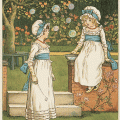The history of beer is also the history of America
Today is National Beer Day. What better time to pair a brewski and some history?
From home brew to near beer to Miller Lite to Voodoo Doughnut Chocolate Peanut Butter Banana Ale, our beer has always reflected American tastes and trends–with a little bit of politics thrown in.
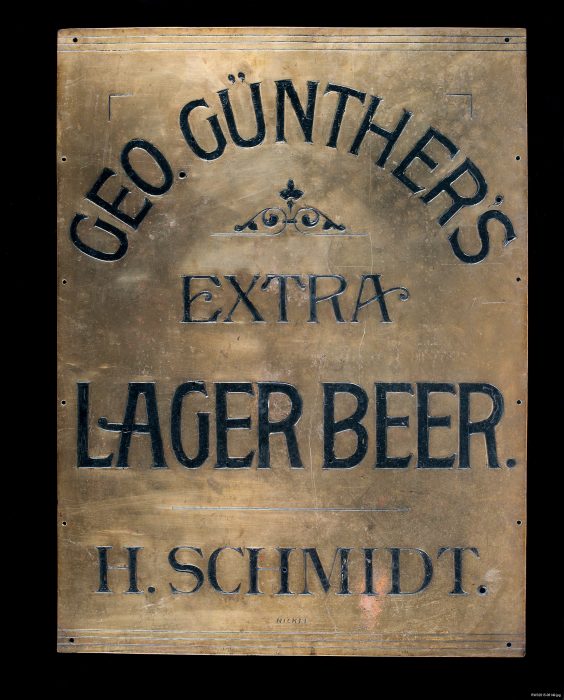
Tavern Sign, George Gunther’s Extra Lager Beer, Baltimore, 1890.
Walter H. Voigt Collection
National Museum of American History, Division of Work and Industry
The history of beer is also the history of America, featuring enterprising immigrants, sly bootleggers, resourceful home brewers, and persistent craft brewery operators who fought long odds to succeed against giant corporations.
The National Museum of American History is exploring the history of beer in the American Brewing History Initiative, a two-year project to document, collect, and preserve the history of beer and brewing in America, with a special focus on home brewing and craft breweries from the 1960s to the present.
While beermaking was dominated for decades by a few mega breweries making bland lager, craft breweries and brew pubs have drastically expanded the landscape and the palate for a wider variety of beers, such as dark malty porters, tart gose, and fruity saison.
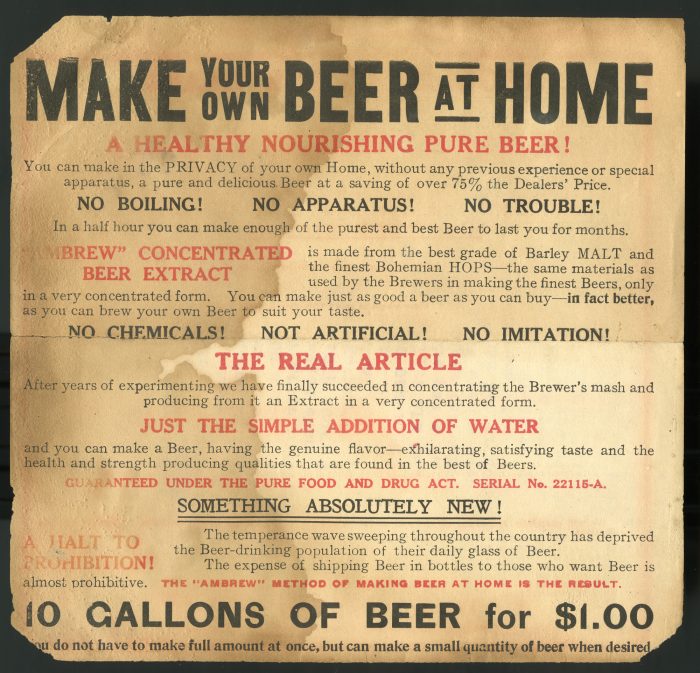
Make Your Own Beer at Home, Advertisement for malt extract, circa 1900.
Warshaw Collection of Business Americana, Series: Beer. (AC0060-0002743-01). National Museum of American History, Archives Center.
Due to an overlooked provision of the laws ending Prohibition, home brewing remained illegal until 1979 although no one was ever prosecuted for brewing a batch of beer at home. Until recently, home brewing remained a scrappy affair among a small hardcore base of mostly male aficionados. Some of those home brewers realized they could expand and launch their own craft breweries as more brewery equipment and distribution systems became available on a smaller scale.
There are now more 6,500 breweries in the United States, and 13 percent of all beer produced in the United States comes from craft breweries. Theresa McCulla, the historian leading the American Brewing History Initiative, has traveled to California to tour craft breweries and has recorded oral histories with members of the brewing community across the country. She also has collected historical objects that will be part of an exhibition at the National Museum of American History next year.

Brewing historian Theresa McCulla joined the staff of the National Museum of American History in 2017
“There has been an amazingly positive response and there’s an enormous amount of excitement that this attention to beer is overdue,” she says. “Beer has developed a persona that is less connoisseurial than wine, and it’s sort of the everyman’s drink. For precisely that reason we are interested in collecting and featuring that story.”
The 13-year dry spell of Prohibition under the 18th Amendment was a disaster for beermaking in the United States, shuttering saloons and biergartens and driving hundreds of breweries out of business. Some large breweries had the resources to survive the dry years and temporarily shifted to making near beer or other products. Pabst Blue Ribbon produced cheese, while Coors ran a ceramics factory using clay deposits near its headquarters in Golden, Colo. Yuengling and Anheuser-Busch pivoted to the youth market and made ice cream. Others like Schlitz and Miller focused on selling malt extract that was advertised for bread making but was primarily used by home brewers to make their own illicit concoctions.
As Prohibition ended in stages, brewers were initially only allowed to brew beer with up to 3.2 percent alcohol, encouraging light flavorless lagers that dominated the market.
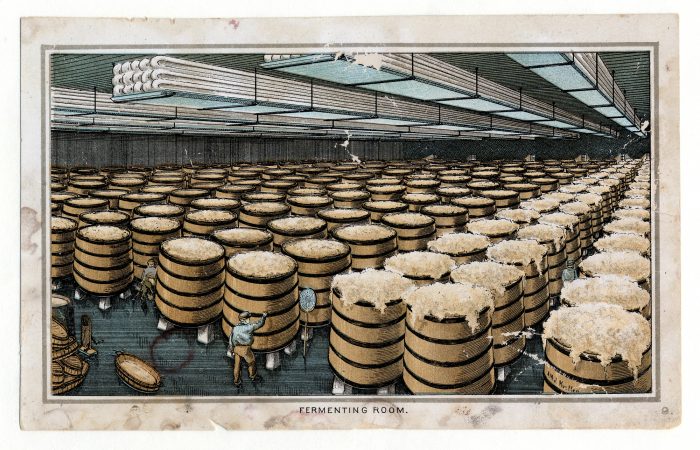
Fermenting room, Souvenir album, F.A. Poth Brewing Company, Philadelphia, Pa.
Warshaw Collection of Business Americana, Series: Beer. (AC0060-0002960-05). National Museum of American History, Archives Center.
Several decades passed before trailblazers opened small independent breweries in the 1960s and 70s and proved they could succeed against the mega breweries, inspiring more followers. In 1965, Fritz Maytag bought Anchor Brewing, a small brewery founded in 1896 during the Gold Rush in San Francisco that had floundered for years and was on the verge of bankruptcy.
Maytag, the great-grandson of the founder of the Maytag washing machine company, invested in new equipment at the aging brewery, altered the recipe of the flagship Anchor Steam beer, and began brewing a porter, barley wine and IPA at a time when no American breweries were making those styles and few Americans had acquired a taste for them. The brewery gradually grew in popularity beyond San Francisco and across the country.
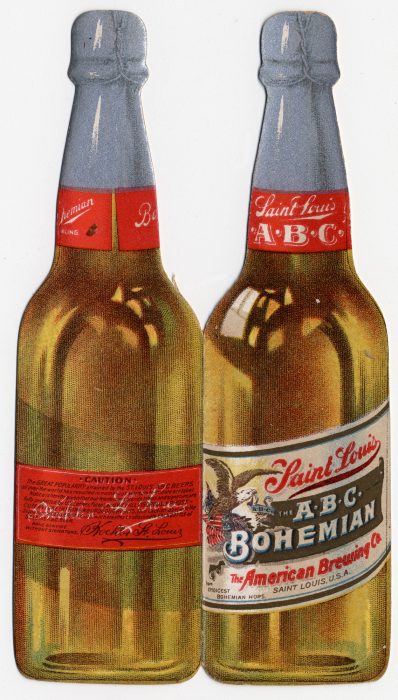
Advertisement for ABC Bohemian Beer, American Brewing Company, St. Louis, Mo.
Warshaw Collection of Business Americana, Series: Beer. (AC0060-0002538-01). National Museum of American History, Archives Center.
“I had the last medieval brewery, and I had to figure out how to get it into the modern age all by myself, and it was a struggle,” Maytag told McCulla last year during an oral history interview. “I had a wonderful, interesting life, partly because the brewery attracted, once we became known, it attracted interesting people from all around the world who would come by and see this curiosity.”
But it was only a matter of time before some small breweries would be gobbled up by large beer companies which saw the competition as a threat or just another source of revenue. In 2017, Japan-based Sapporo Breweries bought Anchor Brewing, although the company kept its headquarters and brewery in San Francisco. Heineken bought Lagunitas Brewing Company the same year, and Corona acquired Ballast Point Brewing in 2015.
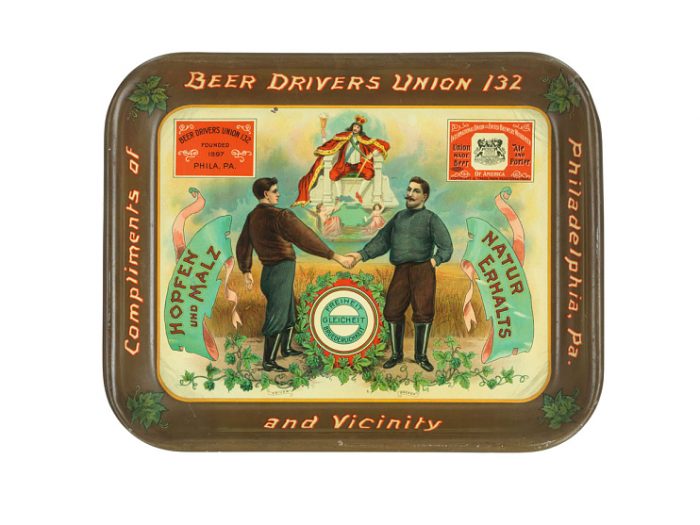
Beer tray, Beer Drivers Union 132, Philadelphia, Pa., circa 1905.
National Museum of American History
Unions’ power was built on worker solidarity. This beer tray shows a driver and a brewer working together. It says in German “Liberty, Equality, Fraternity.”
Many craft breweries were founded by homebrewers who decided to expand after refining their brews. When homebrewing became legal in 1979, Charlie Papazian founded the American Homebrewers Association which later grew to become the Brewers Association, a trade group supporting small and independent craft brewers. The association is sponsoring the American Brewing History Initiative.
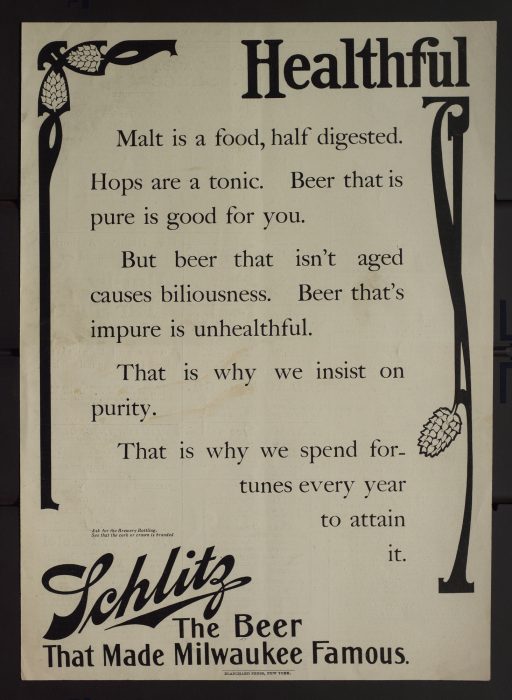
Advertisement, Schlitz Beer, Milwaukee, Wi.
Warshaw Collection of Business Americana, Series: Beer. (AC0060-0002782). National Museum of American History, Archives Center.
Papazian’s first book The Complete Joy of Homebrewing inspired thousands of homebrewers to try the hobby. McCulla’s father also enjoyed homebrewing in Milwaukee, but she wasn’t a big fan as a child even though she loves beer now.
“I remember being six or seven and being horrified by the smell,” she said. “At every family event and Packers game, there was always home-brewed beer and cheese around the table.”
The brewing initiative has collected many objects representing the history of brewing, including 19th century beer tankards, political pamphlets from the Prohibition era, brewing recipes, and many vintage beer bottles, cans, and openers. But one of the most popular artifacts is the simple wooden spoon that Papazian used to brew his beer in a pot on his stove.
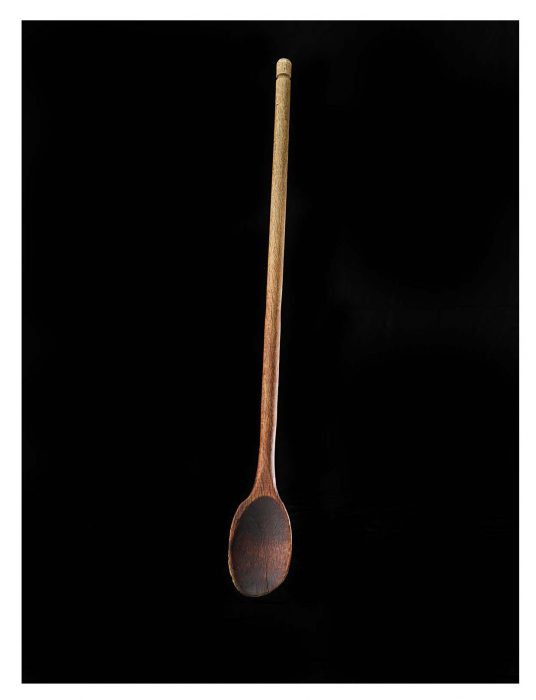
Wooden spoon used by home brewer Charlie Papazian, founder of the American Homebrewers Association. (Courtesy National Museum of American History)
Brendan L. Smith is a freelance journalist and communications consultant with 25 years of experience with newspapers, magazines and websites. He previously contributed to Smithsonian Insider.
Posted: 7 April 2019


